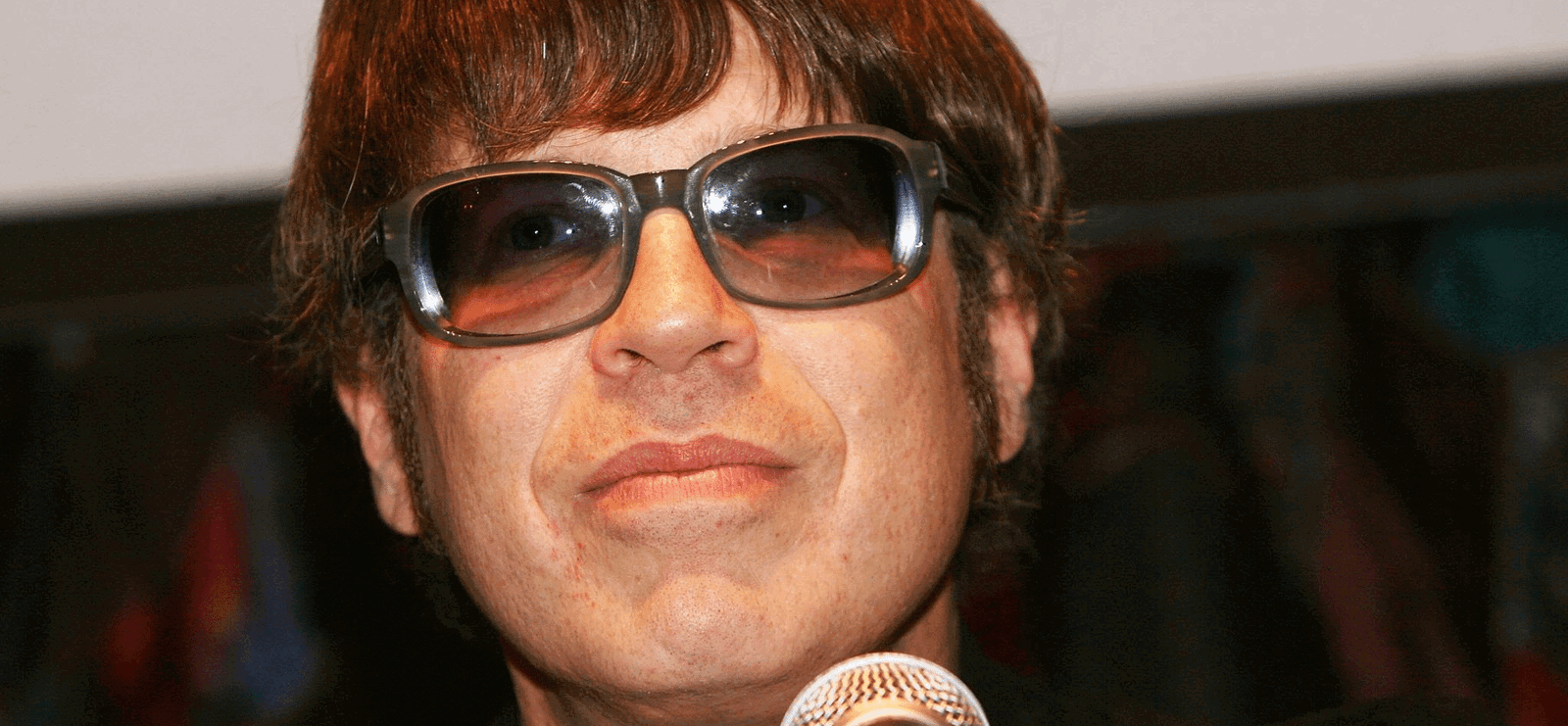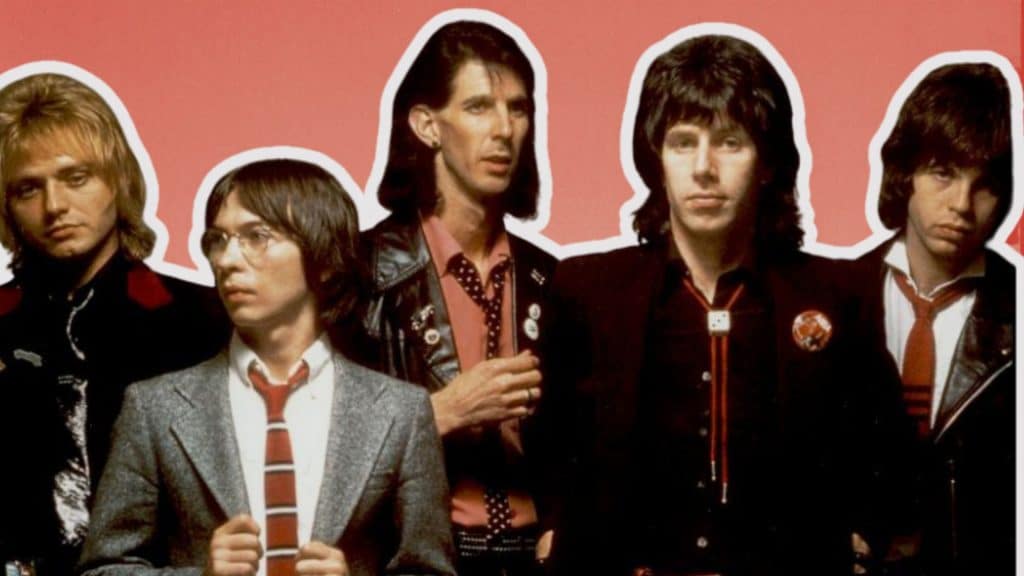The Cars, a well-known American rock band, significantly impacted the music scene from the late 1970s through the 1980s.
However, many fans might not be familiar with the talented individuals who made up this iconic group.
In this blog post, we’ll examine the members of The Cars and explore their contributions to the band’s success.
You’ll learn about each member’s background, roles within the band, and some interesting facts about their musical careers.
We’ll also explore the band’s history, hit songs, and the reasons behind its enduring popularity.
By the end of this post, you’ll have a greater appreciation for the talented artists who created The Cars’ unique sound.
The Cars: Core Band Members and Their Roles
The Cars consisted of five talented musicians, each bringing their unique skills to create the band’s distinctive sound. Let’s take a closer look at the core members and their contributions:
Ric Ocasek

As the band’s frontman, Ocasek led the band, sang backing vocals, and played the rhythm guitar. He was also the primary songwriter, penning most of The Cars’ hits. His quirky lyrics and new-wave sensibilities played a huge role in shaping the band’s style.
Benjamin Orr

Sharing lead vocal duties with Ocasek, Orr’s smooth voice perfectly contrasted with Ocasek’s more unconventional singing style. He also played the bass guitar, laying the foundation for the band’s catchy tunes.
Elliot Easton

Easton’s skilled lead guitar work added depth and complexity to The Cars’ songs. His solos and riffs became an integral part of the band’s sound. He also provided backing vocals, further enhancing the harmonies.
Greg Hawkes

As the band’s keyboardist, Hawkes’ contributions were essential in creating The Cars’ signature blend of rock and new wave. In addition to playing keyboards, he also played guitar, provided backing vocals, and occasionally played saxophone and bass.
David Robinson

Holding down the beat, Robinson’s solid drumming and percussion work formed the backbone of The Cars’ music. His steady rhythms allowed the other members to explore their musical creativity. He also provided backing vocals, adding to the band’s layered sound.
These five members formed a cohesive unit, each bringing their strengths to create The Cars’ unique and influential music.
Musical Style and Evolution
The Cars’ music perfectly blended the past and present, combining the best elements of 1970s guitar-oriented rock with the emerging synthesizer-oriented pop of the 1980s.
This fusion of styles set them apart from their contemporaries and helped define the sound of the new wave era.
The band drew inspiration from a wide range of musical influences. They incorporated elements of punk minimalism, stripping down their arrangements to create a lean, focused sound.
At the same time, they weren’t afraid to explore the more complex textures of art rock, adding depth and sophistication to their music.
The Cars also paid homage to the classic sounds of the past, particularly the rockabilly revival of the 1970s. This influence can be heard in songs like “My Best Friend’s Girl,” which features a twangy guitar riff reminiscent of early rock and roll.
Another key influence was power pop, which emphasized catchy melodies, tight harmonies, and energetic performances.
The Cars’ music often featured these elements, with songs like “Just What I Needed” and “Shake It Up” showcasing the band’s knack for crafting memorable hooks.
As the band’s career progressed, they refined their sound, incorporating more synthesizers and electronic elements.
This evolution can be heard on albums like “Heartbeat City,” featuring a slicker, more polished production style than their earlier work.
Despite these changes, The Cars never lost sight of their core musical identity. They continued to blend past and present, creating a nostalgic and forward-thinking sound.
This unique combination of influences and styles helped establish The Cars as one of their era’s most innovative and influential bands.
Major Achievements and Milestones
Throughout their career, The Cars achieved numerous milestones and earned recognition for their outstanding contributions to the music industry.
One of their earliest and most significant achievements was the success of their self-titled debut album, released in 1978.
The album featured hit singles like “Just What I Needed” and “My Best Friend’s Girl,” which sold over 6 million copies and spent an impressive 139 weeks on the Billboard 200 chart.
This remarkable debut established The Cars as a force to be reckoned with in the music world.
The band’s success continued with subsequent releases, consistently delivering chart-topping hits and earning critical acclaim.
Songs like “Shake It Up,” “You Might Think,” and “Drive” became staples of rock radio and helped cement The Cars’ position as one of the most popular bands of the 1980s.
In recognition of their impact and talent, Rolling Stone magazine named The Cars “Best New Artist” in 1978. This prestigious honor highlighted the band’s immediate influence on the music scene and potential for future success.
As the music video era dawned, The Cars embraced this new medium and created some of the most memorable and innovative videos of the time.
Their video for “You Might Think” won Video of the Year at the first-ever MTV Video Music Awards in 1984.
The video’s creative use of special effects and surreal imagery set a new standard for music video production and showcased the band’s artistic vision.
The Cars’ music videos continued to push boundaries and experiment with new techniques, helping to define the look and feel of the 1980s music scene.
Their willingness to take risks and innovate in this new medium further solidified their position as one of the era’s most important bands.
Key Albums and Hit Singles
The Cars released several groundbreaking albums throughout their career, each contributing to their legacy and showcasing their musical prowess.
Their self-titled debut album, “The Cars,” released in 1978, was a massive success. It featured some of the band’s most iconic tracks, including “Just What I Needed,” “My Best Friend’s Girl,” and “Good Times Roll.”
The album’s blend of rock, power pop, and new wave sensibilities struck a chord with audiences and critics, setting the stage for the band’s future success.
The Cars followed up their debut with “Candy-O” in 1979. This album further showcased the band’s songwriting skills and musical versatility, with hits like “Let’s Go” and “It’s All I Can Do.”
The album’s cover art, featuring a provocative illustration by the renowned artist Alberto Vargas, also became an iconic image associated with the band.
In 1984, The Cars released “Heartbeat City,” becoming one of their most successful and influential albums.
Produced by Robert John “Mutt” Lange, known for his work with AC/DC and Def Leppard, the album featured a more polished and radio-friendly sound.
It contained several hit singles, including “You Might Think,” “Magic,” and the emotionally powerful ballad “Drive,” which became one of the band’s most enduring songs.
Other notable tracks from The Cars’ discography include “Shake It Up,” a top 10 hit from their 1981 album of the same name, and “Tonight She Comes,” a single from their 1985 greatest hits compilation that showcased the band’s continued ability to craft catchy and memorable tunes.
Breakup and Reunions
After a decade of success, The Cars disbanded in 1988. The breakup was primarily due to growing tensions within the band and individual members’ desire to pursue solo projects.
Ric Ocasek and Benjamin Orr had already released solo albums, and the other members were also interested in exploring new creative avenues.
Following the breakup, the members of The Cars focused on their careers. Ocasek remained a prominent figure in the music industry, producing albums for various artists and releasing solo material. Orr, Easton, and Hawkes also pursued solo projects and collaborations with other musicians.
In 2010, after years of speculation and anticipation, The Cars finally reunited. The reunion was bittersweet, as bassist and vocalist Benjamin Orr had passed away in 2000 due to pancreatic cancer.
The remaining members—Ocasek, Easton, Hawkes, and Robinson—decided to honor Orr’s memory and the band’s legacy by creating new music together.
This reunion resulted in the 2011 album “Move Like This.” The album featured the classic Cars sound, with Hawkes taking on bass duties and his signature keyboard work.
While Orr’s absence was felt, the album received positive reviews from critics and fans, who were thrilled to hear new music from the band after so many years.
The Cars’ final public performance occurred in 2018 when they were inducted into the Rock and Roll Hall of Fame.
The band took the stage together one last time, with Weezer’s Scott Shriner filling in on bass to perform their greatest hits.
This emotional performance served as a fitting tribute to the band’s enduring legacy and the enduring power of their music.
Legacy and Influence
The Cars’ impact on the music world extends far beyond their impressive catalog of songs.
Their unique sound and style have influenced countless artists and bands, leaving an indelible mark on the landscape of rock and pop music.
One of the most notable examples of The Cars’ influence can be found in the work of the American rock band Weezer.
Weezer’s self-titled debut album, often referred to as “The Blue Album,” clearly resembles The Cars’ sound, particularly in the use of catchy power pop hooks and new wave-inspired keyboards.
Weezer’s frontman, Rivers Cuomo, has cited The Cars as a significant influence on his songwriting and has even covered their songs in live performances.
Another band inspired by The Cars is The Strokes, particularly in their early work. The Strokes’ debut album, “Is This It,” features a stripped-down, garage rock sound that echoes the minimalist approach of The Cars’ early records.
The Strokes have also cited The Cars as an influence on their songwriting, particularly their combination of catchy melodies with unconventional song structures.
Beyond their impact on specific bands, The Cars’ music has become a beloved part of pop culture.
Their songs have been featured in numerous films, television shows, and commercials, exposing new generations of listeners to their timeless sound.
From the use of “Moving in Stereo” in the classic film “Fast Times at Ridgemont High” to the inclusion of “Just What I Needed” in the popular video game “Rock Band,” The Cars’ music continues to find new audiences and contexts.
The Cars’ enduring relevance is a testament to the quality and originality of their music.
Their ability to blend rock, pop, and new wave elements in a way that feels both nostalgic and forward-thinking has ensured that their songs remain fresh and compelling decades after their initial release.
Conclusion
The Cars’ journey as a band is a testament to their incredible talent, creativity, and enduring influence on the music world.
From their early days in Boston to their induction into the Rock and Roll Hall of Fame, the band consistently pushed the boundaries of rock and new wave, creating a sound that was uniquely their own.
The Cars’ music continues to resonate with fans, old and new, thanks to their timeless songs, innovative music videos, and the undeniable chemistry between the band members.
Their legacy lives on through the countless artists they have inspired and their indelible mark on popular culture.
As we celebrate the life and work of these remarkable musicians, we invite you to rediscover the magic of The Cars and share your favorite band memories in the comments below.





















